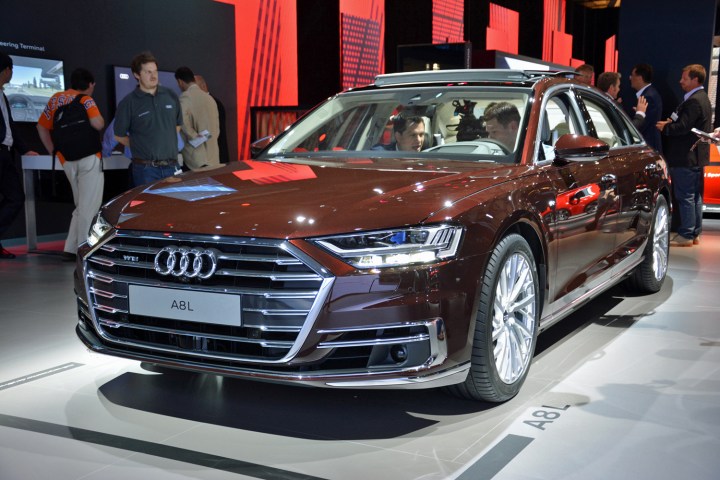
On paper, Audi’s wireless charging technology is similar to wireless chargers for smartphones. Electricity is transferred inductively from a floor plate hooked up to a power source to a receiving coil and channeled to the 14.1-kWh battery pack. The coil is located right under the long-wheelbase A8’s front axle and the MMI display embedded in the dashboard takes the guesswork out of positioning the car over the floor plate by displaying helpful guidelines.
When the two components are perfectly aligned, the floor plate automatically rises up until it gets to within a few sixteenths of an inch away from the coil and begins charging the battery. The pack stores enough electricity to power the A8 L on its own for approximately 30 miles. When it runs low, the car’s 3.0-liter TFSI V6 engine rumbles to life. The gasoline-electric system makes 442 horsepower and 516 pound-feet of torque, so you know it will never feel like it is low on power and it spins all four wheels via an automatic transmission and the company’s time-tested quattro all-wheel drive system.
An Audi spokesperson told Digital Trends the company has not decided whether the plug-in powertrain will be made available to buyers who order the standard-wheelbase car. Theoretically, it can be moved from the A8 L to the A8 without requiring any major modifications. However, the final decision largely depends on buyer demand. The plug-in model’s main markets will undoubtedly be the United States and in China, where buyers are more likely to pay extra for the additional inches of sheet metal.
Even without a plug, every variant of the A8 will be a hybrid. The sedan boasts a 48-volt electrical system that replaces the alternator with a starter/generator unit. It’s an evolution of the technology used in the SQ7, but we’re told it’s much more advanced. Notably, it lets the car coast with the engine off between 35 and 100 mph in order to save fuel.
Audi’s electrified A8 will begin arriving in showrooms next year. Look for a pricing announcement before then. And, expect the wireless charging technology to trickle down to other members of the Audi lineup, including the all-electric e-tron-badged models the brand will launch next year.



